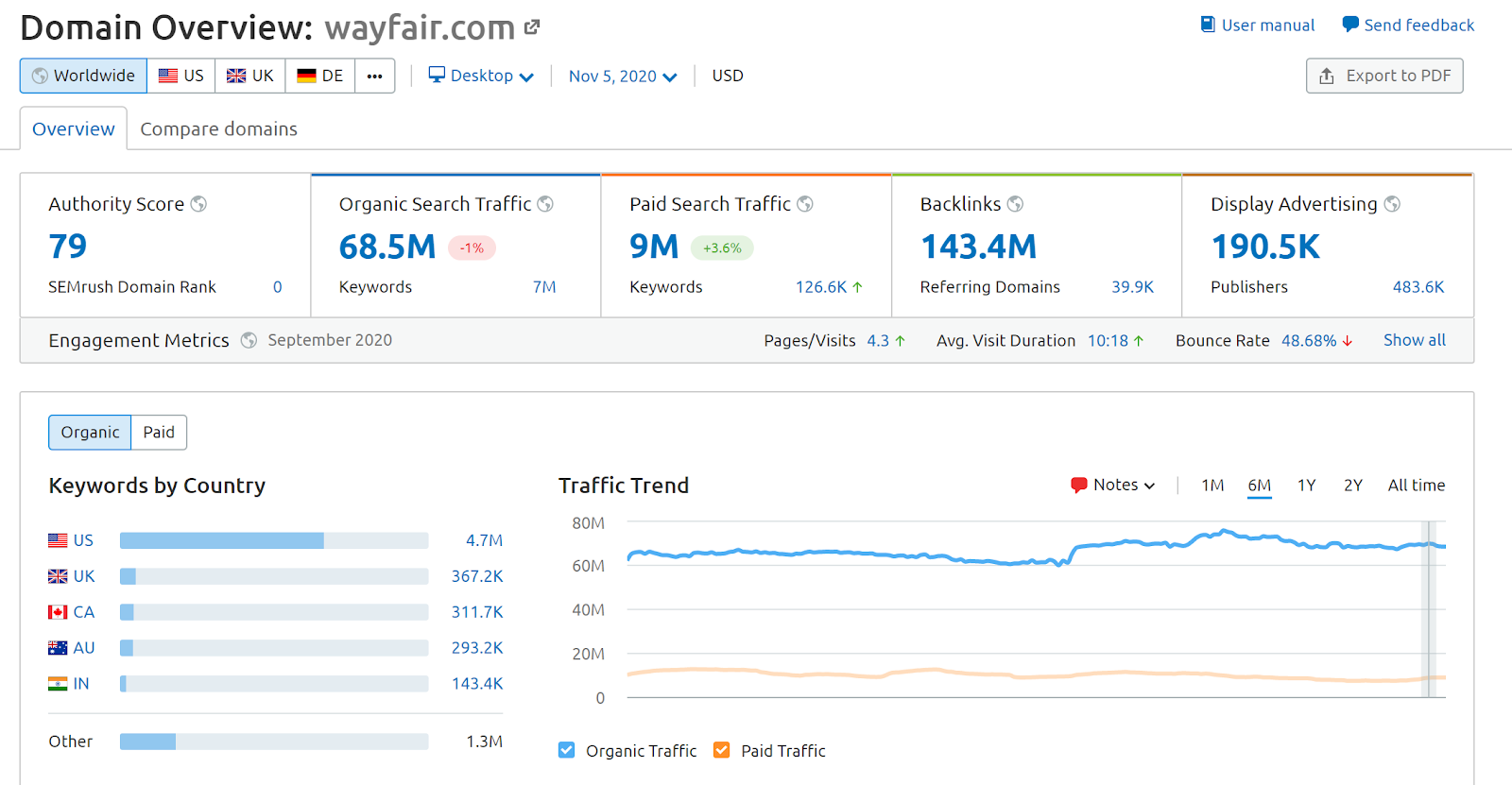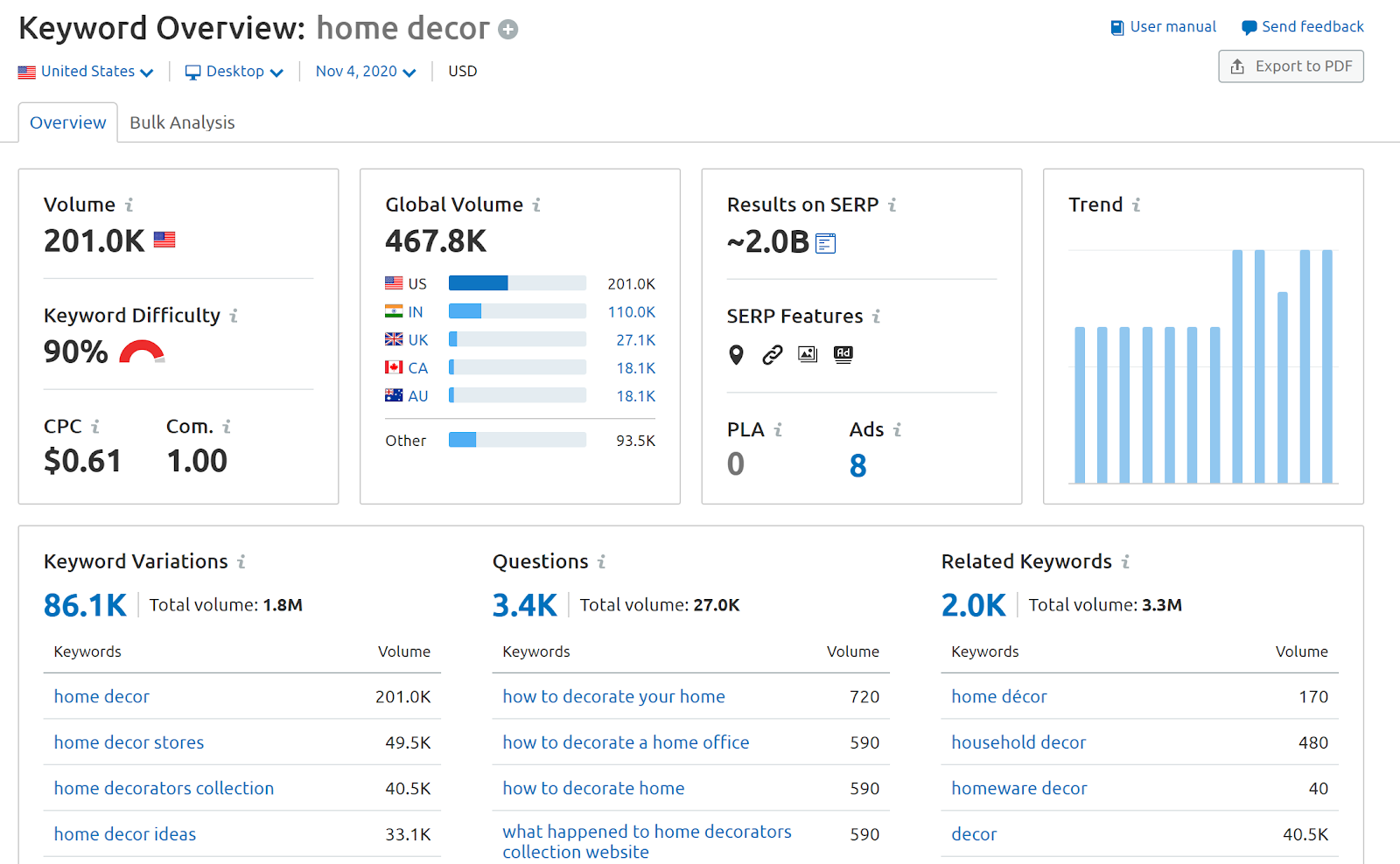Search engine optimization ( SEO) is a valuable marketing tool that drives organic traffic — meaning potential clients — to your website. SEO is a must, particularly for small business owners and those running ecommerce sites. If you don’t have an enormous marketing budget to devote to hiring SEO experts, don’t stress: There are plenty of straightforward SEO tricks you can implement and easy-to-use tools to help you.
Once you have the basics of SEO down, you can decide later if you want to take your optimization to the next level by bringing in a dedicated SEO professional. For now, here are the six steps you should follow to get results with DIY SEO:
1. Set Your Organic Search Baseline 2. Research Keywords and Relevant Search Queries 3. Publish Optimized Content 4. Analyze Your Backlinks 5. Explore Technical Issues 6. Stay Informed1. Set Your Organic Search Baseline
SEO is all about improving your website’s search engine ranking. The first step is figuring out your baseline: How visible is your website now? Domain Overview gives you the answer. SEMrush lets you see how visible your domain is on mobile and desktop devices, and you can get an overview of both organic and paid traffic (e.g., from pay-per-click ads on Google). The comprehensive reports even cover metrics like backlinks.

An SEO audit shouldn’t just include your website, though. It should also encompass your competitors’ websites so that you can get a better idea of their share of your industry’s search volume. Our domain overview tool highlights your main organic competitors, websites competing in your field to get traction online. This lets you identify potential areas for growth and can serve as a source of inspiration.
Set Up Search Analytics
Other tools that marketers can use to set a baseline for their search position include those offered by Google and Bing. Below, we offer a step-by-step guide to track your domain using one of these analytics tools.
Here’s how to set up a Google Analytics account:
Create an Analytics account. Set up your “property” (your website). Set up the “reporting view” in your property. This lets you filter data, for example, based on IP address or defined sales regions. Analytics will then ask you to insert a tracking code to your website, which allows Google to collect data. You can then start viewing data. This guide from Google explains how to filter different views to focus on the data points you find more relevant.Here’s how to set up Bing Webmaster Tools (Bing’s version of Analytics):
Sign up for a Bing Webmaster Tools account. You can use a Facebook, Google, or Microsoft account. Add your website to your account. You must verify that you are the website’s owner. Bing offers three means of doing this: XML file authentication, meta tag authentication, or adding a CNAME record to DNA. You can then upload your site maps and start tracking data. This starter guide takes you through the process in detail.2. Research Keywords and Relevant Search Queries
Keywords are at the heart of a strong SEO campaign. These are words or phrases that searchers plug into a search engine like Bing or Google that bring them to your site. Identifying target keywords that align with your website content and match your target audience’s search intent is critical. You can use a keyword research tool to learn which keywords perform best.
For instance, we have several tools that assist with keyword research. Our Organic Research Tool allows you to see which keywords are searched most often and which keywords drive traffic to your competitors’ websites. Easily discover new organic competitors, see who you're competing with for top positions on SERPs, observe domains' position changes, and more!We also offer tools to see how your site performs for your keywords and content. You can see related keywords to help you decide which ones to target with future blogging efforts (particularly any that might be low-hanging fruit for a quick win in rankings).

3. Publish Optimized Content
Once you’ve identified valuable keywords, you can start crafting high-quality content that will make up a heavy portion of your content marketing strategy. Are you wondering how to do your own SEO content? Follow these basic rules:
Include a primary long-tail keyword naturally in the text. Don’t practice “keyword stuffing.” Search engine algorithms don’t react positively to the overuse of keywords.
Include the primary keyword in the title as an H1 heading.
Choose secondary keywords that logically complement the primary keyword. So, if you’re creating a webpage about root canals for a dental website, a primary keyword might be “root canal,” and a logical secondary keyword might be “cavities.” For future content, you can also consider building out content pages for these secondary keywords and then providing internal links to those pages.
Include at least one piece of “rich” content, like an image, infographic, or video. Search engines recognize that this adds value to the content and will rank the page higher accordingly.
Include the primary keyword in the page’s title tag and meta description.
Consider using any plug-ins available to optimize your content. For instance, WordPress offers many plug-ins that can help you enhance your on-page SEO efforts.
If you’re refreshing content, make sure that your new content is uploaded to the existing landing page or remove the old content before producing your new page. This will help you avoid duplicate content, which can harm your Google search rankings.
If you have trouble updating meta tags, copy, and other page elements because your developer team is dealing with a large backlog of change requests, check out a solution such as PageImprove. PageImprove and Edge SEO solutions allow you to make instant, indexable, and reversible website changes.
4. Analyze Your Backlinks
Search engines prioritize content that is valuable to the end-user. Google has even established loose criteria to assess value, the EAT principle: expertise, authority, and trustworthiness. Backlinks (links from other websites to your own) help establish your EAT. Links from high-authority, high-traffic domains are the most valuable and worth pursuing as part of your digital marketing strategy.
Backlink Analytics provides details about referring domains, including anchor texts and IP distribution. You can also use a backlink gap tool to identify which websites in your niche have earned the most backlinks in the past. This is a fantastic way to discover what backlinks you might be missing. You can then address these gaps. There are many effective link building methods, from creating shareable infographics to writing guest posts on other platforms.
5. Explore Technical Issues
Content aside, your DIY SEO strategy also needs to take technical issues into account. This technical SEO checklist is a great place to start. For example, you should make sure you’re using HTTPS, a known ranking factor in search engines. This offers encryption that keeps data passed through your site secure, including potentially sensitive customer data. The aforementioned guide also advises on how to improve page speed, fix crawl errors, and more.
6. Stay Informed
Search engine optimization is a constantly evolving field. That’s why specialists dedicate their entire careers to it! Search engines like Google are always updating their algorithms and changing the factors that influence search engine results pages (SERPs). Following bloggers in the industry and staying up to date on SEO news will help you stay abreast of the latest. The Google Search Central blog, formally Google Webmasters blog, is a great starting point.
SEMrush Makes DIY SEO Easy for You
If you’ve wondered, “Can I do SEO myself?” the answer is definitely. You don’t need to hire an outside agency to improve your SEO, and this guide gives you some basic SEO tips to get started.We offer a comprehensive suite of do-it-yourself SEO tools to support you in implementing the above steps. With this wealth of resources, you will be well-positioned to excel in your do-it-yourself SEO endeavors and ultimately provide visitors to your site with a better user experience.Innovative SEO services
SEO is a patience game; no secret there. We`ll work with you to develop a Search strategy focused on producing increased traffic rankings in as early as 3-months.
A proven Allinclusive. SEO services for measuring, executing, and optimizing for Search Engine success. We say what we do and do what we say.
Our company as Semrush Agency Partner has designed a search engine optimization service that is both ethical and result-driven. We use the latest tools, strategies, and trends to help you move up in the search engines for the right keywords to get noticed by the right audience.
Today, you can schedule a Discovery call with us about your company needs.
Source:





